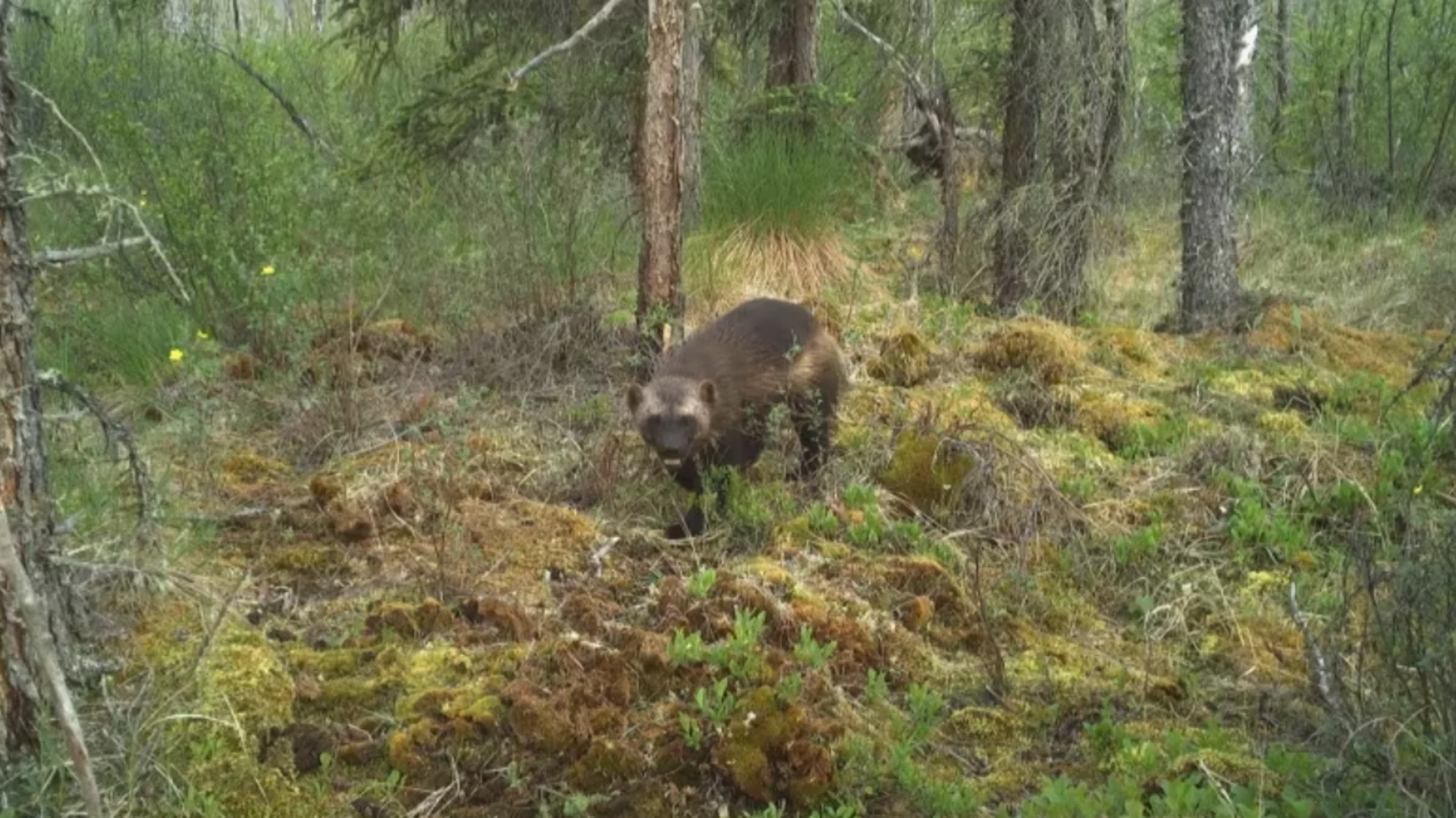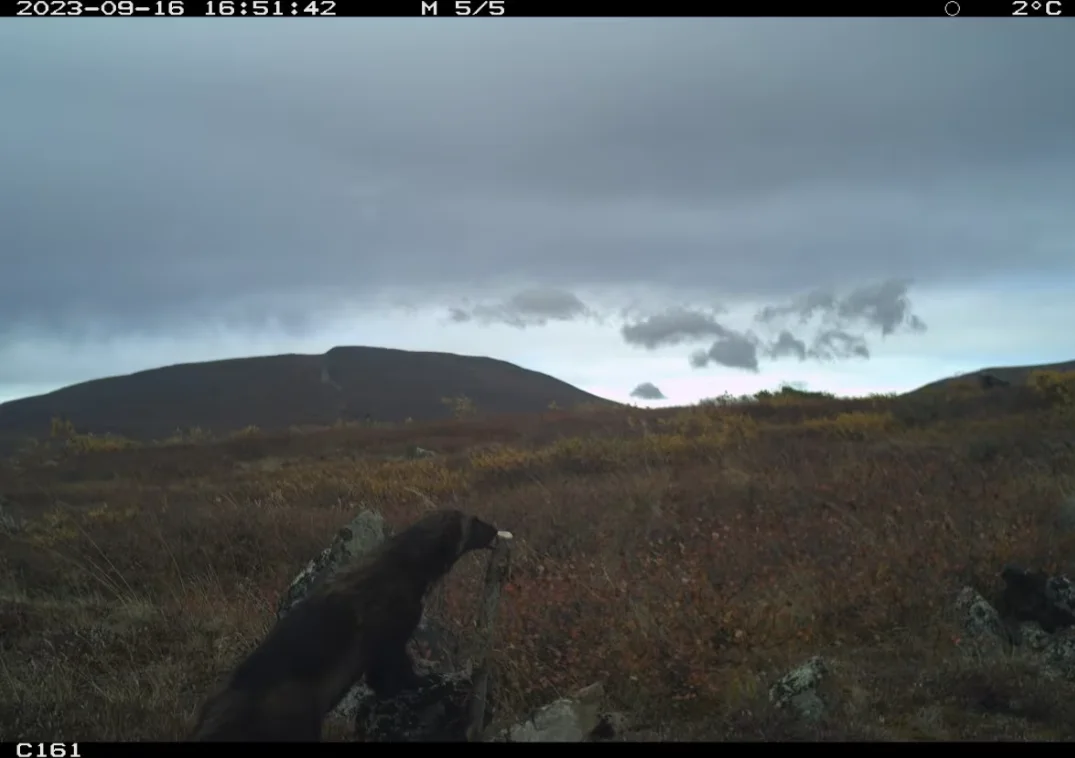
Study to look at how mining activity, sound pollution affects Yukon wolverines
Famously among the most elusive animals in the North, wolverines prefer to roam as far away from humans as possible. This tendency has led researchers to wonder how industrial activities might be changing their traditional habitat range.
Researchers from the Tr'ondëk Hwëch'in First Nation, the University of Alberta, Yukon University, and the Yukon government have partnered together to try and answer that question, with support from the Yukon South Beringia Priority Place Initiative.
They set up monitoring equipment in different areas of the Yukon's Klondike region last winter to try to get a picture of how the species might be responding to mining activities and noise.
SEE ALSO: Caribou recovery program at Jasper National Park aims to boost herd numbers
Mesocarnivores — omnivores whose diet is mostly meat — such as wolverines aren't typically considered as charismatic as top predators like polar bears and wolves, nor are they as directly useful to humans as species such as caribou or salmon. That means they are less often the focus of research efforts.
But for some members of the Trʼondëk Hwëchʼin First Nation, wolverines have earned unique recognition for their strength, intelligence and perseverance. Wolverines have been known to take down animals many times their size, from moose to bison.
In traditional Trʼondëk Hwëchʼin storytelling, ancient agreements were made between humans and the most dangerous animals that influence how we interact with them today.
"The interesting thing about Nähtra [wolverine] is that there was no agreement made with Wolverine," said Alice McCulley, director of natural resources with Tr'ondëk Hwëch'in First Nation and one of the research project's leads.
"It's a very interesting aspect of these traditional stories. Basically, Nähtra follows his own rules and because of that, he is deserving of our respect."
Beyond being heavily represented in traditional artwork and stories, wolverines are prized by members of the Trʼondëk Hwëchʼin First Nation for their fur, with its ability to repel snow and ice.

A wolverine appears in trail camera footage near the old Klondike gold fields, on the traditional territory of the Tr’ondëk Hwëch’in First Nation. (Zachary Fogel)
For the First Nation, the study is the first step toward a long-term monitoring initiative.
McCulley is also a member of the Dawson Regional Planning Commission. This time last year, the commission released a new version of the Dawson land use plan, which outlined an ecological monitoring strategy for the First Nation. That plan identified mining as a potential threat to wolverines and other fur-bearers.
That threat isn't new; industrial noise from mining has been reverberating through the traditional territory of the Trʼondëk Hwëchʼin, around Dawson City, for over a hundred years now.
"The area has been mined pretty intensively starting with the Klondike Gold Rush of 1898 and continuing through the 20th century to today," said Zachary Fogel, a University of Alberta graduate student involved with the project.
In February and March of this year, the team set up trail cameras and autonomous sound recording units (ARUs) across a gradient of mining disturbance intensity to measure wolverine population density in each area. The equipment is intended to monitor wolverines as well as ambient noise.
DON'T MISS: Natural, human impacts on animals seen in 2,000-year-old condor poop
"We're surveying both in the heavily-mined areas as well as less-disturbed areas to see how wolverine populations respond to mining activities," said Fogel.
Toward the end of September, Fogel set out to retrieve the units, and will review the data over the next few weeks with McCulley and Knight.
The team took a number of steps to try and stay one step ahead of Nähtra, the trickster, and ensure that the animals were captured by the trail cams. They installed scent lures at the camera and placed them strategically on game trails. And if the camera were to capture marten and lynx, that would still represent important data on Yukon mesocarnivores.
For McCulley, the project has also been valuable as a practice in partnership.
In the past, she explained that some researchers have designed studies according to their own values and objectives, "parachuted" in researchers to gather data, and left without involving community members.
WATCH: Awesome footage of wolverine and wolf fighting over dinner in National Park
It's a strategy that many academic institutions are increasingly recognizing as a neocolonial approach to conducting research and looking to change.
In this study, Trʼondëk Hwëchʼin was involved from the very beginning. McCulley and Knight worked with Fogel and other partners to design the study with the community's monitoring goals in mind.
"I would say this is one of the more successful collaborative projects that we're participating in currently, and it's really going to inform how we prioritize future projects and opportunities as they come up," McCulley said.
"I think we have a lot to learn from wolverine or Nähtra, and it's encouraging to share these goals with other organizations and governments."
This article, written by Caitrin Pilkington, was originally published for CBC News.
Thumbnail image courtesy of Zachary Fogel via CBC News.





